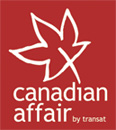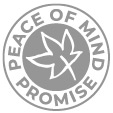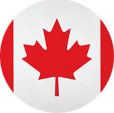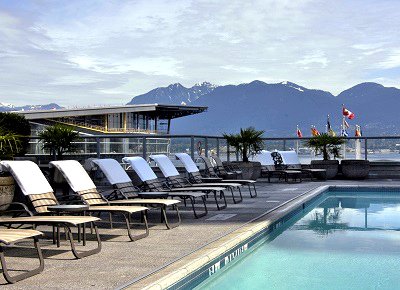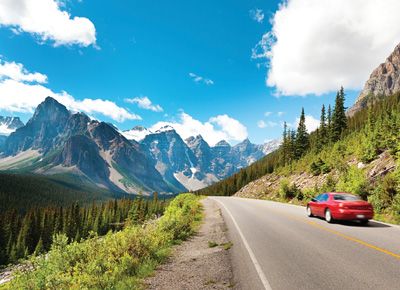How Old is Canada Really?
Canada celebrated a big milestone in 2017...150 years since confederation. But does this truly represent Canada's age?
What about the hundreds of years of European history, the thousands of years of indigenous history, and the millions of years of natural history that have shaped Canada?
Our timeline explores some of the biggest events that have influenced Canada as we know it. Perfect reading before your holiday to Canada!



Share this Image On Your Site
Exploring Canada's age
In 2017, Canada celebrated 150 years since its Confederation. Parties were planned across the country for Canada’s 150th ‘birthday’, but the festivities have sparked the question, “how accurate actually is this age?”. First Nations communities have been living in the land that is now called Canada for thousands of years, while the land itself is billions of years old.
Gabby from She Blogs Canada comments on the significance this landmark celebration, saying:
“When I think of Canada, I think of a strong and powerful nation. The people are very friendly and Canadian pride is very strong. There are many things that make Canadians distinctly Canadian - like saying 'eh', eating poutine, and saying 'sorry' at the first chance we get! We share a strong bond with one another - making it hard to believe that Canada is only 150. You would think that a Country with so much wisdom and pride would be a lot older - but that's just what makes Canada so great.”
But perhaps it is older. The country has a huge repository of history to be discovered during a holiday in Canada, from Fort Howe to the Alberta Badlands. Its colourful history is peppered with events that have defined a new era for Canada. In this timeline, we look through some of the major events of Canadian history, before asking – how old is Canada, really?
Billions of years old?
Canada’s geographical age
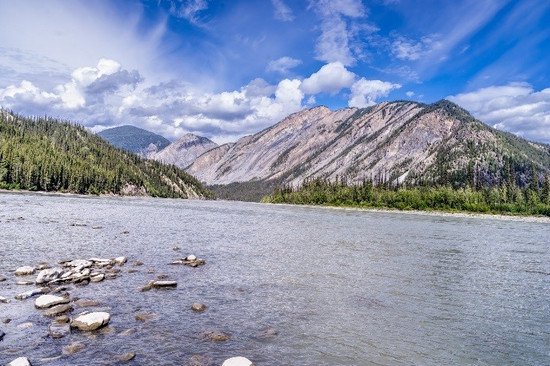
With its imposing mountains, mysterious old-growth forests and more lakes than the rest of the world combined, Canada’s landscape certainly feels like one a long time in the making. Although many consider Canada a young country, the geography of the land belies a much older history – one that stretches back many millions of years.
Dr. Francois Therrien, Curator of Palaeoecology at the Royal Tyrrell Museum explains:
“Canada is made of several pieces of crust that have been “glued” (or accreted) together over billions of years. We have some of the oldest rocks on Earth in the Northwestern Territories and Nunavut that are up to 4 billion years old.”
However, the land as it was then is not quite what we would call Canada today. Therrien says, “It’s only sometime during or after the Archean (4 - 2.5 billion years ago) that small continents and pieces of crust collided together to form what we call today the Canadian Shield. Other parts of the country (the Appalachians, western prairies, Rocky Mountains and so on) were added through collision with islands and continents and sedimentation in oceans over the last 2.5 billion years. The Canada that we know today is a relatively recent construction (less than 65 million years old) but it is composed of fragments of crust that are as old as 4 billion years.”
Nim Singh from Destination Canada recommends visiting the province of Newfoundland and Labrador if you want to find out more about the nation’s prehistoric past, saying:
“This province is unique. No other easily-reached place on the planet has a geological record that so fully reveals the history of the Earth, going back almost to its birth over 4.5 billion years ago. In the North of Labrador, the Province’s oldest rocks are dated at 3.87 billion years of age, amongst the oldest discovered anywhere on Earth. The rocks of Signal Hill are 550 million years old — 100 million years older than the eastern Appalachian Mountains, and over 400 million years older than the western Rocky Mountains!”
To uncover more of Canada’s geographical past, Nim says visiting the Johnson Geo Centre is a must. This centre in St John’s is built in a natural rock basin that was originally filled with peat, covering glacial till and boulders. Nestled between 500 feet of exposed rock falls the centre explores the history of the solar system, the province and its people. Even the heating system is fascinating, as six geothermal walls extract heat from the deep rocks in the winter and dissipate it into them in summer!
Its oldest life forms
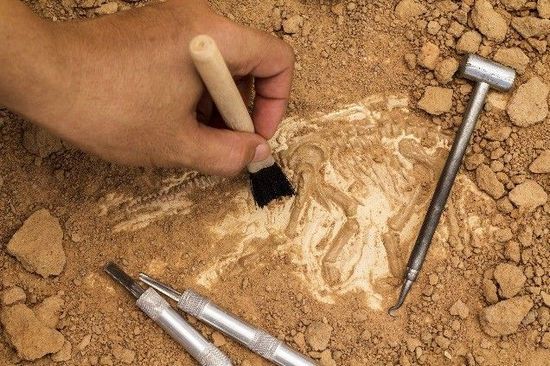
However, there is also proof of living organisms dating back almost as far in Canada. As Dr. Francois Therrien explains, “Just recently, the putative fossils of the oldest life forms (unicellular organisms that lived near hydrothermal vents) have been found in northern Québec, their age being somewhere between 3.77 and 4.28 billion years old.” Of course, as she notes, in those days Canada didn’t really exist – it was before the formation of the Canadian Shield landform. However, the discovery is nonetheless an exciting one for Canadian history.
Scientists in Québec believe they may have found the oldest fossils in the world – in Canada. The tiny tubes and filaments they found are made of an iron oxide known as haematite and, as Dr. Therrien says, are believed to be the remains of bacteria once living underwater in hydrothermal vents. These microfossils give huge insight into life on Earth millions of years ago. Matthew Dodd, one of the researchers who made the discovery, tells us:
“The discovery reveals Canada preserves the oldest remnants of life on Earth and some of the very first environments in which life arose. Canada today is home to some of the most ancient terrains on Earth spanning 4 billion years of Earth history making it one of the world's greatest archives of natural history.”
Thousands of Years old?
Canada’s First people
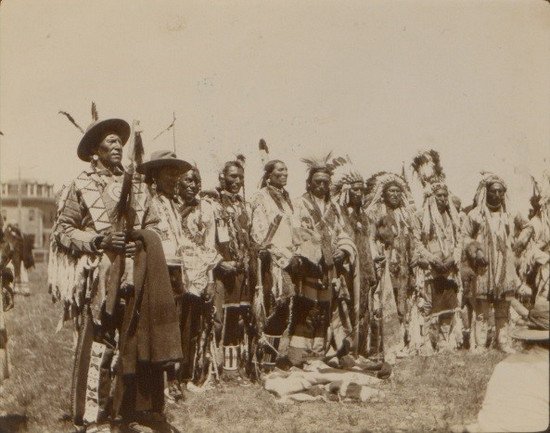
If we judge Canada’s origin by when humans first settled there, it would be thousands of years old. Scientists have not reached a firm conclusion on where First Nations people migrated to Canada from, but it is known that they have lived here for over tens of thousands of years.
Before Europeans arrived, Canada was inhabited solely by aboriginal groups. Of course, First Nations and Inuit people did not recognise the area as Canada – and many still do not. The border separating Canada and the U.S.A, for example, goes across many of the lands that Native American and First Nations groups occupied, such as the Blackfoot who live in Alberta as well as Montana and Idaho. However, the history of the first people to occupy the area now politically known as Canada does give us a sense of the age of cultures here.
Recent research indicates that aboriginal presence in Canada may stretch back even further. Earlier this year, an ancient village believed to be one of the oldest human settlements in North America was discovered in an excavation on Triquet Island, British Columbia. Scientists from the Hakai Institute found tools for lighting fires, fish hooks and spears dating back to the Ice Age. Estimated at 14,000 years old, the village is much older than many ancient civilisations, including Egypt’s pyramids of Giza and Peru’s Machu Picchu!
Oldest living tree
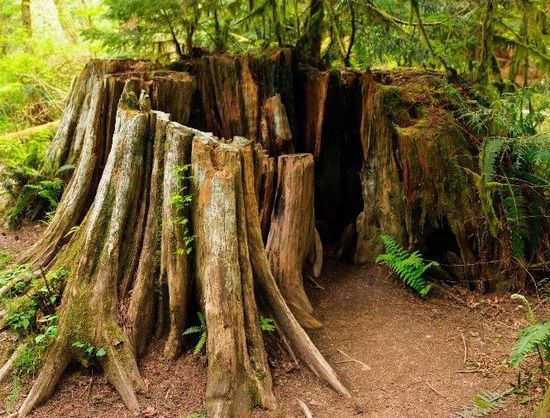
If you’ve ever stepped foot in Vancouver’s old-growth forests, you’ll know that there are trees in Canada older than most of the historic buildings in the country. However, you might be surprised to learn just how old some of Canada’s trees are. Researcher Dr. Peter M. Brown is the Director of
Oldlist, a database dedicated to ancient trees, identifying maximum ages that different species in different countries can reach. He tells us:
“The oldest tree in Canada, at 1,917 years, is a subalpine larch (Larix lyalli) from the northern Rockies near Kananaskis in Alberta. That tree was reported in a 1990 paper by John Worrall from the University of British Columbia, entitled - appropriately enough - “Subalpine larch: Oldest trees in Canada?” There is also a Douglas-fir (Pseudotsuga menziesii) at 1,350 years old and a Nootka cypress (Chamaecyparis nootkatensis) at 1636 years old, both on Vancouver Island, although there were reportedly even older Douglas-fir trees in Vancouver before the heavy logging
Oldest existing icebergs
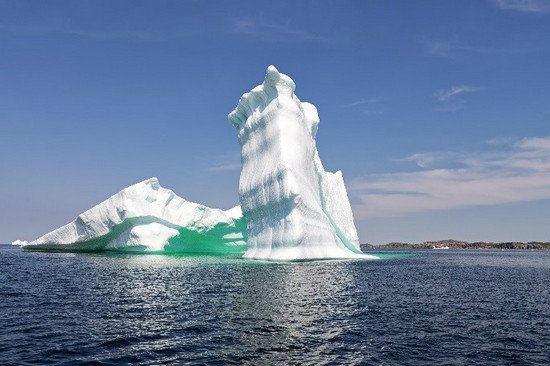
The Maritimes of Canada are famous for their icebergs – from the bergs themselves to the delicacy, Iceberg Beer. Here visitors can find some of the oldest icebergs in the world, which give a fascinating indication as to the age of the waters that surround Canada.
Darlene Langlois, Chief of the Meteorological Service of Canada explains:
“Icebergs coming from Greenland are thought to be thousands of years old. We don’t follow icebergs from calving to final melt but it usually takes 2-3 years to go from Greenland to the East Coast of Canada. Some are grounded in shallow waters and they can last longer.”
So, next time you visit Nova Scotia, keep a look out for icebergs – they may be millennia old!
Hundreds of years old?
The contact era
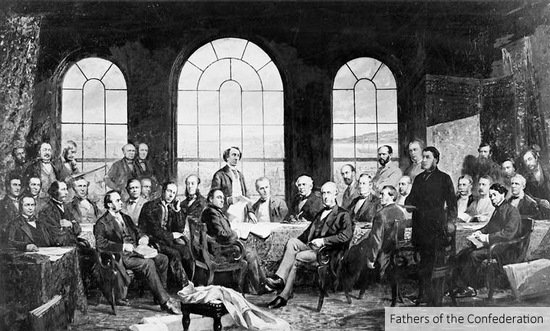
According to Robert J Shipley, when Europeans first arrived in the territory that we now call Canada, settlers and aboriginal peoples enjoyed two or three hundred years of relative harmony beforehand. During this time, he explains, European colonists were heavily dependent on the goodwill and intelligent technologies of the First Nations, who had the insight on how to survive in what could be an inhospitable environment. For at least three hundred years, the only form of transportation used was the First Nations’ canoe, which settlers adopted to begin the fur trade and other endeavours. Settlers were unable to survive in the north without Inuit dress and were unable to walk in many areas without snowshoes – an aboriginal invention.
In fact, many of the early settlers who are often regarded as heroic explorers actually perished due to a resistance to collaborate with aboriginal people – the Franklin expedition, for example, notoriously ended in disaster after John Franklin refused to take First Nations peoples’ advice. For those who did listen, however, aboriginal aids were a life saver. The physician John McCrea, unlike Franklin, co-operated closely with the First Nations whilst working for the Hudson’s Bay Company. Following the advice of his aboriginal consul, he wore seal skins and was able to survive in the most extreme of temperatures as a result.
The relationship was sometimes more fraught, however. Robert recites an old anecdote of how once, Europeans arrived in Canada, many of them severely ill with scurvy. Local First Nations families helped many of the settlers, giving them a kind of tea known as spruce beer, curing the unwell arrivals. Not long after, however, other members of the settler crew decided that this process must be unnatural and executed those generous helpers on the accusation of witchcraft.
Over the years, this tumultuous relationship persisted, but today, Canada is one of the most respectful countries in the world when it comes to indigenous rights. In 1985, the Indian Act was amended to end discriminatory provisions present in previous versions, and in 2008, then- Prime Minister Stephen Harper offered a formal apology for the residential school system which removed First Nations, Inuit and Metis children from their cultures. This willingness to confront the more uncomfortable aspects of history is what makes Canada such a progressive nation – and this attitude is continued in the Canada 150+ celebrations, which celebrate the longer history of First Nations culture.
Canadian inventions

This forward-thinking attitude has also manifested itself in science and technology, nurturing several brilliant minds who have invented some of the most important products and practices in the world.
From the invention of lacrosse by First Nations communities many hundreds of years ago to the invention of telephone technology in 1874 by Alexander Graham Bell, life as we know it would not be the same without Canada’s pioneering discoveries.
As Anthony Wilson-Smith, CEO of Historica Canada, comments, Canada has also been home to some of the world’s more unusual innovations, too. The world’s first UFO landing pad, for example, opened in St. Paul, Alberta, in 1967. To celebrate Canada 150+, several of these inventions are being featured in the exhibition Made in Canada, held in Science World, Vancouver, to honour Canadian ingenuity with exhibits that inspire creativity and innovation. Dr Scott Sampson, President and CEO of Science World, says:
“Made in Canada gives Science World a chance to celebrate Canada’s long history of creativity and innovation as part of Canada 150+. Through this celebration of imagination and ingenuity, we want to inspire Canadian kids and young adults to build on our national tradition of being science and technology leaders and carry this tradition into the future.”
Visit the exhibition this summer to explore the history behind inventions such as the egg carton, the lightbulb, basketball and, of course, lacrosse.
Canadian firsts
First National Park
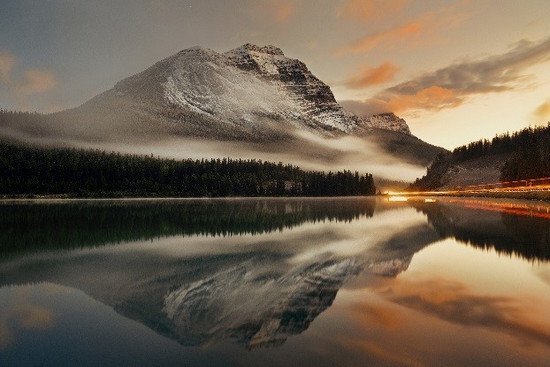
Founded in 1885, the much-loved landscape of Banff became Canada’s first National Park. Established on the 25th November as Banff Hot Springs Reserve, Banff has a lively history, from its first human activity around 10,300 years ago to present-day skiing and hiking exploits.
Pamela Marks from the Whyte Museum reflects on the historical significance of Banff National Park, and how the landscape can be used to decipher Canada’s age:
“The mountain landscape of the Canadian Rockies, with its constantly-changing glaciers, mountains, rivers and forests, suggests the need to measure Canada’s age in millions of years. The history of First Nations people in the Rockies, including their artefacts, artwork and stories, can be measured over thousands of years. The coming and going of settlers and visitors from around the world, including outfitters, mountaineers, artists, business people and tourists, has filled the past 150 years. For some of these people their Canada story is just beginning.”
This year, why not mark Canada 150+ by visiting one of the oldest and grandest landscapes in the country in Banff? Here, the Whyte Museum of the Canadian Rockies is celebrating with a feature summer exhibition, ‘Banff Reflections: 150 Years and Counting’. Pamela explains, “This exhibition reflects the character of Banff as a town uniquely situated in a national park with large expectations from the labyrinth of global visitors. The Whyte Museum’s diverse collections contextualize Banff from its humble beginnings to the present.”
First National Historic Site
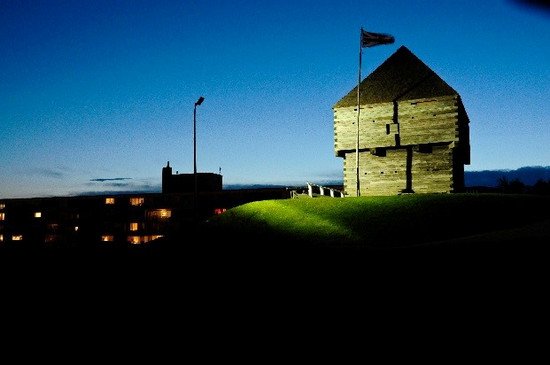
In 1777, Fort Howe was established, later to become Canada’s first National Historic Site in 1966. Built by the British during the American Revolution, the fort was created to protect Saint John’s, New Brunswick from further raids by American forces. At the time, the fort held eight cannons and barracks for a hundred men. It was named after Sir William Howe, then Commander-in-Chief of the British Army in America.
On 30th March 1914, the area was designated as Fort Howe National Historic Park, largely due to rallying by James B. Harkin, the first Commissioner of Dominion (National) Parks. At first, the main aim was to create an urban recreational park. At the time, many people were reluctant to its classification, deeming it less noteworthy than other historical landmarks. However, in 1966, it was made the first National Historic Site on the advice of historians, prompting schemes to rebuild the fort to its original condition.
Today, thousands of visitors venture here to see the fort, and enjoy the panoramic views it provides of Saint John Harbour and the Saint John River.
Political firsts
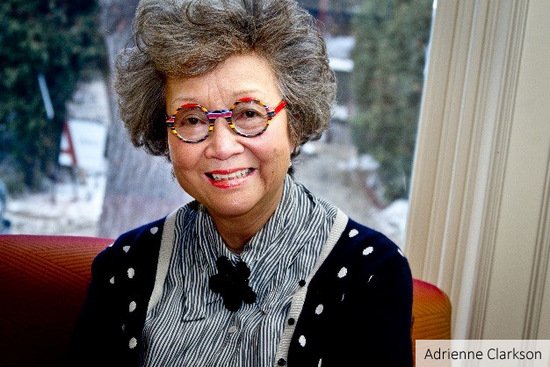
Canada is today regarded as one of the most progressive and accepting countries in the world, and, of course, it took a lot of learning to get there. In the 20th century, the rallies of women, indigenous groups and people of colour began gaining momentum as they strived to have their human and civil rights recognised. Women eventually won the right to vote in federal elections in 1918, although this only applied to white women - women of colour didn’t receive this privilege until much later. First Nations people living on reserves finally won the right to vote in federal elections on 1st July 1960.
Then, on the 25th June 1993, Kim Campbell was elected as the first ever female prime minister of Canada. This is seen by many to mark a turning point in Canadian politics - not long after, in September 1999 Adrienne Clarkson was appointed Governor-General, making her the first to hold such a role in many categories. She was the first person to hold the role without a military or political background, and the first non-white Canadian to be appointed to the vice-regal position.
However, in parts of Canada, the principles of liberty we now associate with the Civil Rights and Suffrage movements were being exercised long before. Robert J Shipley explains how, in 1795, the area we now know as Ontario actually became the first ever jurisdiction to ban the practice of owning slaves. This was long before the abolition of slavery by the rest of the British Empire in 1833, and held that people could no longer enslave other people. Those who were already slaves previous to the movement could be freed, and if they were not, then their children would be automatically born as free citizens. This meant that, by the war of 1812, there were people of African descent – many of whom would otherwise have been held as slaves – fighting as free citizens. Following the war, they were given land grants and gradually received increasing civil rights, long before the rest of the colonial world even banned slavery itself.
What does this all mean for Canada’s 150+ celebrations?
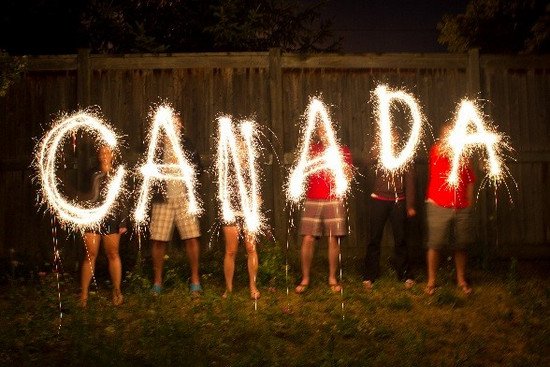
Considering the various different ages we could apply to Canada, it is no surprise that the designation of Canada 150 at first caused some controversy. Luckily, though, the plans for celebration have been mindful of the differing accounts of Canada’s age, and many cities have adapted their programs to reflect this. For example, as Marnie Rice, Cultural Planner from Vancouver’s Commemoration of Canada’s 150+, explains, indigenous peoples have been engaged in debate about how to best represent their thousands of years of history within a commemoration that can appear to focus on more recent history. Marnie says:
“From these conversations, a key direction emerged: Vancouverites wanted to approach Canada 150 from the point of view that Vancouver is a city situated on the unceded traditional territories of the Musqueam, Squamish, and Tsleil-Waututh First Nations (Host Nations), and is a City of Reconciliation. The purpose of the designation of being a City of Reconciliation means that Vancouver commits to a sustained relationship of mutual respect and understanding with local First Nations and the Urban Aboriginal community.
“The City of Vancouver’s year-long 'Canada 150+ Experience' acknowledges the pre-Confederation and contemporary Indigenous culture in Vancouver, which we recognize as integral to Canada’s creation and its shared future with all people, as recognized in the '+' of Canada 150+. Canada 150+ is about Indigenous and non-Indigenous peoples moving forward together.”
Robert J Shipley, a historian from the University of Waterloo, also emphasises the arbitrary nature of the current 150+ celebrations. He suggests that, in celebrating Canada’s anniversary, we are marking the anniversary of a stage in government, and points out that different historians will always choose different times as the landmark point of Canada’s inception as we know it. In fact, not all of the provinces were even included in the Confederation of 1867.
Ultimately, though, Robert resists placing a definitive age on Canada. As he points out, other countries have only recently assumed the forms we are familiar with (Germany in 1949, India in 1947), yet their age is rarely questioned, or even speculated upon. Anthony Wilson-Smith, CEO of Historica Canada, puts forward a slightly different view. He says:
“There are multiple timelines in Canadian history. One begins 150 years ago, with Confederation creating the country of Canada in 1867. Another begins much earlier – archaeologists have unearthed a settlement on Triquet Island in British Columbia dating back 14,000 years ago. We acknowledge and celebrate the importance of both.”
What all this shows us is that we, too, should recognise the equal importance of Canada’s political age, the legacy of thousands of years of First Nations culture, and the ancient land on which this fantastic country we now call Canada rests. If all this talk of Canada and the culture that lies within it has got you excited for an upcoming trip to the sacred lands, then take a look at these Canada hotels and start planning your 2021 trip.
